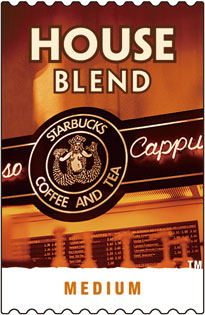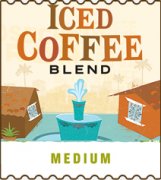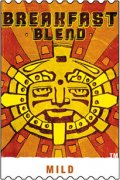Starbucks preferred coffee and decaf preferred coffee.

First choice coffee and decaine first choice coffee
Caption: the preferred coffee is a medium-bodied Latin American mixed coffee, characterized by lively acidity and a refreshing and well-balanced flavor.
Processing: washing method.
Similar coffee: Guatemala Antigua coffee and Colombian coffee.
Taste with food: nuts, apples, blueberries.
Tasting suggestions:
Will be the first choice of coffee with the Gold Coast mixed coffee ®coffee and taste together. The main feature of preferred coffee is balance, with a balanced blend of flavor, mellow and acidity. On the other hand, Gold Coast Coffee ®Coffee emits a series of strong aromas.
More information about this coffee:
Each Latin American mixed coffee is unique and does not include any Latin American single coffee. Sometimes, our mixed coffee may also contain beans purchased from different regions of Mexico, Guatemala and Colombia. In addition, our buyers also purchase high-quality coffee in Costa Rica, El Salvador, Nicaragua and other Latin American countries.
The coffee of choice is the top 10 best-selling coffee and partner favorite coffee in the United States. In fact, it is coffee that lets the world know the taste of Starbucks, because coffee is sold in catering industries such as hotels, restaurants and campuses.
Excerpts from Starbucks' preferred coffee
This great coffee can lead you to explore a variety of other delicious coffee at Starbucks, but it is by no means "enlightenment" coffee. Frequent aftertaste of this coffee often makes me wonder which genius makes this comprehensive coffee so exhilarating. Refreshing acidity, wonderful Latin flavor, and always more mellow than the memory. For some reason, this well-balanced coffee has become our iconic mixed coffee, and it is often specially brought home to taste every week. With Starbucks' first choice coffee, John Coltrane and newspaper on a quiet Sunday morning-it's a great way to end the week!
-Jim Morgan, Business continuity Department partner, Seattle support Center
When I taste Starbucks' first choice coffee in the warm and bright spring, this coffee makes me feel relaxed and gives me new hope.
-Satoshi Nakano, store partner, Japan
Excerpts from the coffee of choice for low-cause Starbucks
It is refreshing and pleasant, which makes me feel warm and comfortable.
Like the bright sunshine in the morning.
-Kelly Sit, store partner, Hong Kong
Source: www.starbucks.cn, the official website of Starbucks
Important Notice :
前街咖啡 FrontStreet Coffee has moved to new addredd:
FrontStreet Coffee Address: 315,Donghua East Road,GuangZhou
Tel:020 38364473
- Prev

Starbucks Flavor Fancy Coffee Making Flower Pavilion Breeze Coffee
Coffee growing region: multi-regional latin american and east african coffee type: medium coffee description: this affinities coffee with refreshing citrus flavors perfectly balanced with caramel and cola flavors. Processing method: Washing method Matching taste: hazelnut, lemon, orange Similar coffee: Kenya coffee Flower Pavilion Breeze coffee Summer 2006
- Next

Starbucks drinks introduction Starbucks Breakfast Coffee
Breakfast coffee description: mild and fragrant, this light mixed coffee gives people a lively first impression and is a great drink to start a new day. Processing: washing method. Similar to coffee: recommend light-flavored mixed coffee or preferred coffee. Taste with food: nuts, apples, blueberries, lemons. Tasting suggestion: compare mixed coffee and French baking for breakfast
Related
- Beginners will see the "Coffee pull flower" guide!
- What is the difference between ice blog purified milk and ordinary milk coffee?
- Why is the Philippines the largest producer of crops in Liberia?
- For coffee extraction, should the fine powder be retained?
- How does extracted espresso fill pressed powder? How much strength does it take to press the powder?
- How to make jasmine cold extract coffee? Is the jasmine + latte good?
- Will this little toy really make the coffee taste better? How does Lily Drip affect coffee extraction?
- Will the action of slapping the filter cup also affect coffee extraction?
- What's the difference between powder-to-water ratio and powder-to-liquid ratio?
- What is the Ethiopian local species? What does it have to do with Heirloom native species?

